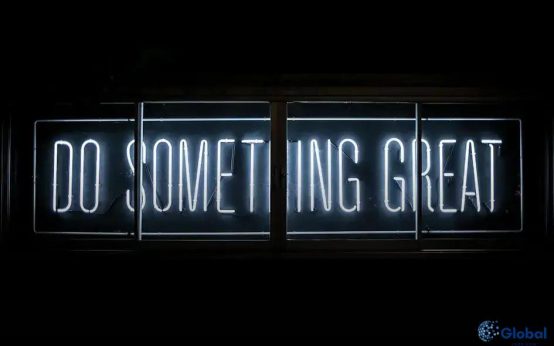A well-crafted resume is crucial in making a strong first impression. Unfortunately, many job seekers fall into common pitfalls when creating their resumes. Avoiding these common resume mistakes can significantly increase your chances of landing your dream job. In this article, we’ll explore key areas such as avoiding typos, maintaining specificity, omitting irrelevant details, and enhancing design to keep your resume on the top of the pile.
Typos and Grammatical Errors
One of the most common mistakes job seekers make in their resumes is not paying enough attention to typos and grammatical errors. These errors can leave a poor impression on potential employers and might give the impression of carelessness. To ensure your resume is polished and professional, it’s crucial to proofread it several times. Consider using tools like Grammarly or Hemingway to catch any overlooked mistakes.
In addition to automated tools, it can be beneficial to ask a friend or colleague to review your resume. Sometimes a fresh set of eyes can catch errors that you might miss. Double-check commonly confused words, like ‘their’, ‘there’, and ‘they’re’, as these often slip through even when you’re careful. Similarly, pay attention to homophones and context to prevent errors that spell-checkers might not detect.
Maintaining consistency in your language is equally important. Use the same tense throughout your resume and ensure that all your bullet points follow the same grammatical structure. For instance, start each action point with a strong verb in past tense, such as ‘managed’, ‘led’, or ‘developed’, which clearly communicates your achievements and experiences to the employer.
Lack of Specificity
One of the most prevalent mistakes job seekers make is the lack of specificity in their resumes. When potential employers scan through resumes, they look for clear and distinct details that align with the job description. General statements like ‘responsible for office tasks’ do not provide enough insight into your skills or accomplishments.
Be Precise with Your Achievements
Rather than listing vague duties, specify what you achieved in your previous roles. For instance, instead of writing ‘improved sales,’ you might say ‘increased sales by 20% over six months through strategic marketing plans.’ Such details demonstrate your impact and capabilities.
Tailor Your Resume Each job application should have a resume tailored to that specific role. Highlight the skills and experiences that are most relevant to the job you’re applying for. This tailoring not only shows that you are qualified but also indicates a genuine interest in the position.
Using concrete examples and quantifiable results can also help your resume stand out. Mention specific projects or responsibilities with measurable outcomes. For example, ‘Led a team of five to complete a software development project three weeks ahead of schedule.’
Lastly, focus on keywords. Many companies use Applicant Tracking Systems (ATS) to screen resumes. These systems search for specific keywords related to the job you’re applying for. Pay close attention to the job listing and incorporate relevant terms and phrases into your resume without resorting to clichéd buzzwords.
Irrelevant Information
When crafting a resume, the inclusion of irrelevant information can significantly detract from its overall effectiveness. Job seekers often feel the need to include every job they’ve ever had, regardless of its relevance to the job they’re applying for. This common mistake can cause potential employers to overlook key experiences. To maintain a concise and targeted resume, it’s crucial to tailor your content according to the job description.
Highlight pertinent experiences and skills that align with the job requirements. For instance, if you’re applying for a marketing position, it’s unnecessary to include past experience as a cashier or unrelated hobbies like pottery. Focus on roles and accomplishments that directly relate to the marketing field. Remember, employers spend only a few seconds scanning each resume. You want them to immediately recognize your suitability for the role.
Including relevant keywords from the job listing is beneficial as well. This strategy not only showcases your understanding of the industry but also ensures your resume passes through automated tracking systems more efficiently. Avoiding unrelated content will keep your resume concise and increase the chance of it making a strong initial impression.
Poor Design and Formatting
One of the key elements in a resume is its design and formatting. A clear and visually appealing format is crucial. Employers typically spend only a few seconds on each resume, so first impressions matter. Ensuring that text is legible and well-organized can make a significant difference.
Use of consistent font styles and sizes is essential. Avoid using too many different fonts, as this can be distracting. Stick to one or two fonts for a clean look. It is also important to choose a readable font size.
Effective use of headers and bullet points can help structure the content. Headers should clearly distinguish sections of your resume, while bullet points can make key information stand out.
Consider the use of white space strategically. Crowding text into one section can overwhelm the reader. Adequate spacing between sections and margin sizes contribute to a professional appearance.
Ensure your resume is not too long. A concise and focused resume that highlights your most relevant skills and experiences is preferable to a lengthy document. Typically, a one-page resume is ideal for most job seekers, unless you have extensive experience relevant to the job.
Maintain uniform alignment throughout the document. Centered text can be useful for headings, but left alignment typically works best for your main content.
Visual aids, like charts and icons, can sometimes enhance the document, but use them sparingly. They should contribute to readability, not distract from the key content.




